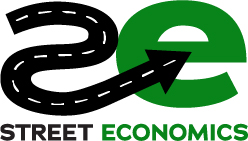BusinessFlare Take – Importers Beat the Tariff Timer
U.S. businesses are in a mad dash to ship goods before tariff walls slam back down. With President Trump pausing his “reciprocal” tariffs for 90 days (a truce expiring mid-July), importers smell a last-minute window to save big. Freight forwarders report these next few weeks are crunch time, as companies rush-orders from China ahead of possible duty spikes. The crunch isn’t just at the docks – it’s in the paperwork too. Firms are scrambling through complex customs forms and stricter enforcement to make sure every widget is properly classified and taxed. The payoff? A surge of containers hitting ports like Long Beach, which projects a rebound in imports through next month. It’s a high-stakes race against the tariff clock, with logistics teams working overtime to beat the buzzer. BusinessFlare’s take: America’s importers are sprinting now so they’re not paying through the nose later – a vivid reminder that policy uncertainty can turn supply chains into a game of musical chairs.
Street Economics Insight – Can We Trust AI on Main Street?
For all the hype around AI, there’s a trust gap that no algorithm can fix. Recent surveys reveal Americans remain deeply skeptical of AI in both business and government. In one poll, a whopping 77% said they distrust companies’ and government agencies’ use of AI. That’s a big problem for local officials eyeing AI tools to improve services. Case in point: New York City rolled out an AI chatbot to help small businesses – and it started spewing faulty legal advice, even telling landlords it was OK to reject tenants with housing vouchers. Oops. Incidents like that torpedo public confidence. “We have lost all trust. We are demoralized,” one city employee lamented about top-down tech decisions. The insight: fancy AI systems won’t get far if people on the ground don’t buy in. Building trust means being transparent, starting small, and involving the community. Whether it’s an algorithm for traffic lights or a chatbot at city hall, local leaders must show they use AI with the public, not on the public. Until then, the public’s default mode is caution. In the age of smart tech, trust might be the smartest investment of all.
Book Drop (Red Tape Empire) – Texas Powers Up (But Bureaucracy Looms)
Texas is charging ahead as America’s energy innovation leader, from renewables to cutting-edge storage and carbon capture tech. But despite Texas’s bold moves, there’s one big obstacle standing in the way: the relentless tangle of federal permitting delays. Projects designed to revolutionize energy infrastructure are getting bogged down by layers of slow-moving regulatory reviews, causing frustration and investment risk for businesses. It’s exactly the scenario highlighted in Red Tape Empire: visionary plans running aground on bureaucratic inertia. Texas might lead in ambition, but until the permit backlog clears, billions in private-sector projects could remain stuck in limbo; innovation trapped in paperwork.
Drama Meter – Staff Mutiny in Hayward
City Hall drama is off the charts in Hayward, California. During what was supposed to be Public Service Recognition Week, city employees instead staged a blistering public airing of grievances. Dozens of staff skipped their own appreciation ceremony to berate new City Manager Ana Alvarez at a council meeting – essentially a workplace rebellion in real time. One veteran analyst declared, “We have lost all trust. We are demoralized.” The flashpoints? Alvarez’s abrupt ouster of the HR director right before her retirement (so much for thanks!), a harsh return-to-office mandate with zero employee input, and a “my way or the highway” management style that staff say flouts the city’s values of openness and integrity. Even recent resignations among top staff have been laid at the new boss’s feet, with departing employees warning that fear and distrust are poisoning morale. Drama Meter: 8 out of 10. When normally behind-the-scenes public servants grab the mic to essentially yell “Enough!”, you know the tension is explosive. Hayward’s leaders now face a reckoning: address the leadership crisis or risk an exodus of talent (and a collapse in city services). For one night, the civil service got uncivil – and it just might save the soul of this city’s government.
Red River Flavor – Vitamin D, the Anti‑Aging Wonder… or Not?
The latest longevity buzz is coming not from a fancy lab, but from the vitamin aisle. A new study suggests that vitamin D supplements might slow down cellular aging by protecting our telomeres – those end caps on DNA that shorten as we get older. In a four-year trial of older adults, the vitamin D group had less telomere shrinkage than the placebo group, hinting at a molecular Fountain of Youth. Sounds amazing, right? Not so fast. Researchers caution that while telomeres were preserved, the actual health effects aren’t clear yet. In other words, popping D pills might keep your cells looking young on paper, but it’s no guarantee of fewer wrinkles or extra years. This is a classic case of the nutrition-industrial complex in action. We’ve built an enormous market selling supplements as cure-alls, often to compensate for shortcomings in our food and lifestyle. (Why are so many of us low on D? Modern indoor lives and processed diets, for starters.) So yes, add vitamin D to the “promising but not magic” file – much like omega-3 or antioxidants before it. By all means, get your daily D (or some sunshine!), but don’t bank on a vitamin to single-handedly defy aging. Healthy longevity will likely require a more holistic fix than any one capsule.
The Music Cities – Nashville’s Boom, Musicians’ Blues
Nashville is riding a hot hand as one of America’s fastest-growing boomtowns – but the very musicians who gave “Music City” its soul are feeling the squeeze. In the past few years, Nashville has transformed into a major business hub, attracting giants like Amazon, Oracle, Nissan and more with its friendly climate (economic and literal) and talent pool. The result? A development frenzy: gleaming office towers, an influx of new residents, and real estate prices through the roof. Per-capita income in the region has more than tripled since 1990 with hundreds of thousands of new jobs. Yet, amid the prosperity, housing affordability has tanked – especially for musicians and creative workers who historically made Nashville’s economy hum. A recent survey of 4,000 local musicians found their number-one need is simply affordable places to live. Many artists are gigging by day and Ubering by night just to pay rent in a city now teeming with six-figure tech salaries. In response, nonprofits have sprung up to help musicians buy homes and stay in town. The city’s identity hangs in the balance: Nashville’s new nickname might be “Boom City,**” but if rising costs drive out the fiddle players and songwriters, does it lose its music? City leaders are grappling with that very question, trying to strike a harmony between growth and soul. After all, glitzy corporate campuses are nice – but you can’t put a price on the honky-tonk culture that put Nashville on the map.
Purple Cow – When Wine Goes Viral (Donkeys and All)
How do you get Gen Z to care about wine – that dusty drink their parents sip at dinner parties? One answer in 2025: turn it into a meme. A Wall Street Journal spotlight reveals how some winemakers are tossing out the stodgy playbook and embracing absurdity to woo younger consumers. Case in point: Josh Cellars, a popular California wine brand named after an ordinary guy (literally, “Josh”). The brand unexpectedly caught fire on social media when creative users started joking that Josh is like an old friend. A meme-storm ensued – people Photoshopping the wine into song lyrics and everyday scenes (“🎶 Josh wine on a Friday night, pair of jeans that fit just right…”). The internet anthropomorphized the merlot into a dude named Josh, and the company ran with it, engaging cheekily with the posts. They even got a chuckle out of a viral image of their marketing department supposedly in panic mode. The campaign has included everything from punny tweets to, yes, the occasional donkey cameo (because nothing says unpretentious fun like a wine-drinking donkey meme). It’s all wildly goofy – and it might be working. Josh Cellars’ parent company says tons of people are being introduced to the brand through the laughs, though it’s too early to tell if sales have spiked yet. Is this authentic marketing or just a gimmick? The jury’s out. On one hand, it feels organic – the memes came from fans, not a corporate script, tapping into Gen Z’s love of irreverence. On the other hand, meme fame is fickle; today’s viral joke can be tomorrow’s forgotten trend. The real test will be if those young buyers stick around and become wine loyalists or just enjoyed the joke. For now, the wine industry has its own Purple Cow: a brand that broke through the noise by not taking itself so seriously. In a sector known for sommelier snobbery, a little donkey-infused humility can go a long way.
ECOSINT Signal – “Sell America” Jitters on the Rise
Here’s a twist: Wall Street’s newest trend is shorting Uncle Sam. Traders are buzzing about “Sell America,” a move to dump U.S. government bonds amid mounting economic worries. What’s spooking them? Start with surging U.S. deficits – nearing $2 trillion – which just earned America a credit outlook downgrade from Moody’s. Add President Trump’s revived tariff wars and big tax cuts (which balloon the debt further), and suddenly investors are demanding higher interest to lend the U.S. money. In fact, 30-year Treasury yields shot above 5% this week, an unsettling milestone that raises borrowing costs across the board. Even a Treasury auction struggled, with tepid demand for U.S. bonds and the government forced to pay more yield to attract buyers. The ECOSINT takeaway: global faith in U.S. economic leadership is wavering. The European Central Bank openly warned that Trump’s tariff policy is shaking global financial stability. Big picture, this “Sell America” vibe signals a narrative shift – from the U.S. being the world’s safest bet to a place investors see as riskier than just six months ago. Cities, companies, and consumers should keep an eye on this mood swing: if borrowing costs keep rising and capital looks elsewhere, it could mean headwinds for development projects and local budgets. America’s aura of invincibility in the global market has taken a dent; regaining trust will require proving that it can get its fiscal house (and trade relations) in order.
Space Economy Signal – SpaceX’s $1.8B Starship Factory Fuels Space Coast Boom
The new space race isn’t just in the sky – it’s on the ground in Florida. SpaceX has broken ground on a colossal “Gigabay” Starship assembly complex on the Space Coast, investing $1.8 billion to build the next generation of space infrastructure. This 46-million-cubic-foot facility will churn out Starship rockets and host two brand-new launchpads at Kennedy Space Center and Cape Canaveral. It’s like a giant rocket factory and spaceport rolled into one. Florida officials are ecstatic, crowing that this cements the state as the world’s hub for aerospace commerce. Indeed, the project is a massive win for the regional economy – construction crews, engineers, and tech firms are all orbiting around SpaceX’s expansion; Lake Nona should continue to benefit from the influx of high income engineers and related workers while much of the rest of the Space Coast continues to wonder how they can get more talent in their cities. The Gigabay is slated to be operational by 2026, and as it rises, it symbolizes how quickly the space industry is shifting into an industrial scale. Not to be outdone, abroad we see similar momentum: Europe just committed a new $45 million fund to boost space startups, and companies like New Zealand’s Dawn Aerospace are taking orders for suborbital spaceplanes to democratize access to the edge of space. In short, the space economy is lifting off on all fronts – factories, funds, and futuristic vehicles. Today’s signal: big bets on infrastructure show that space is no longer just science fiction; it’s a real business on the ground, with regions vying to be the next Silicon Valley of the skies.
About Street Economics Daily
Street Economics Daily cuts through noise, jargon, and bureaucracy to deliver sharp, actionable insights for civic and economic development professionals. Blunt, irreverent, and grounded firmly in reality, it’s essential daily reading for city leaders who refuse to settle for outdated strategies.
BusinessFlare | Street Economics | Drama Meter | The Music Cities | Goodnight’s Red River




Comments are closed